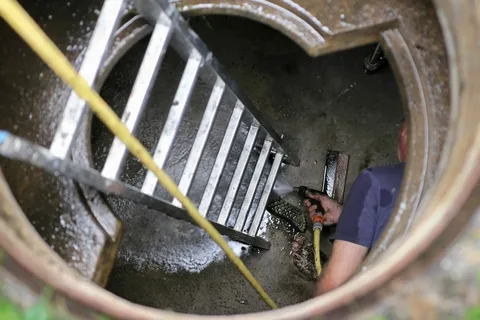Identifying the Issue:
Concrete water tanks are vital components of water storage infrastructure, but over time, they can succumb to wear and tear, leading to leaks, cracks, and structural damage. The first step in effective repair is a comprehensive assessment of the tank’s condition. This involves inspecting the interior and exterior surfaces for signs of damage, such as spalling, cracking, or corrosion of reinforcement bars. Specialized tools like ground-penetrating radar or ultrasonic testing can aid in identifying hidden defects. Through meticulous examination, professionals can pinpoint the extent of the damage and devise appropriate repair strategies.
Repairing Cracks and Leaks:
Cracks and leaks are common issues that compromise the integrity of concrete water tanks, posing risks to water quality and structural stability. Repairing these defects requires meticulous attention to detail and the use of suitable materials. Epoxy injection is a popular method for sealing cracks, wherein epoxy resin is injected into the cracks under pressure to fill and bond them together. For larger cracks or leaks, polyurethane sealants or cementitious coatings may be applied to provide a durable barrier against water ingress. These repair techniques not only restore the watertightness of the tank but also reinforce its structural integrity, ensuring long-term performance.
Protective Coatings and Maintenance:
To enhance durability and prolong the service life of repaired concrete water tanks, protective coatings and regular maintenance are essential. Applying coatings such as epoxy or polyurethane can provide an additional layer of defense against corrosion, chemical exposure, and abrasion. These coatings act as a shield, preventing moisture intrusion and inhibiting the growth of mold and algae. Moreover, routine inspection and maintenance practices, such as cleaning, resealing joints, and monitoring for signs of deterioration, are crucial for identifying potential issues early on and addressing them promptly. By implementing a proactive maintenance regimen, water tank owners can mitigate the need for extensive repairs and ensure reliable water supply for years to come.
In conclusion, effective repair of concrete water tanks necessitates a systematic approach that encompasses thorough inspection, precise repair techniques, and proactive maintenance. By addressing cracks, leaks, and other defects promptly and employing appropriate repair methods, water tank owners can restore the integrity and functionality of their infrastructure, safeguarding the reliability and quality of their water supply.concrete water tank repair


